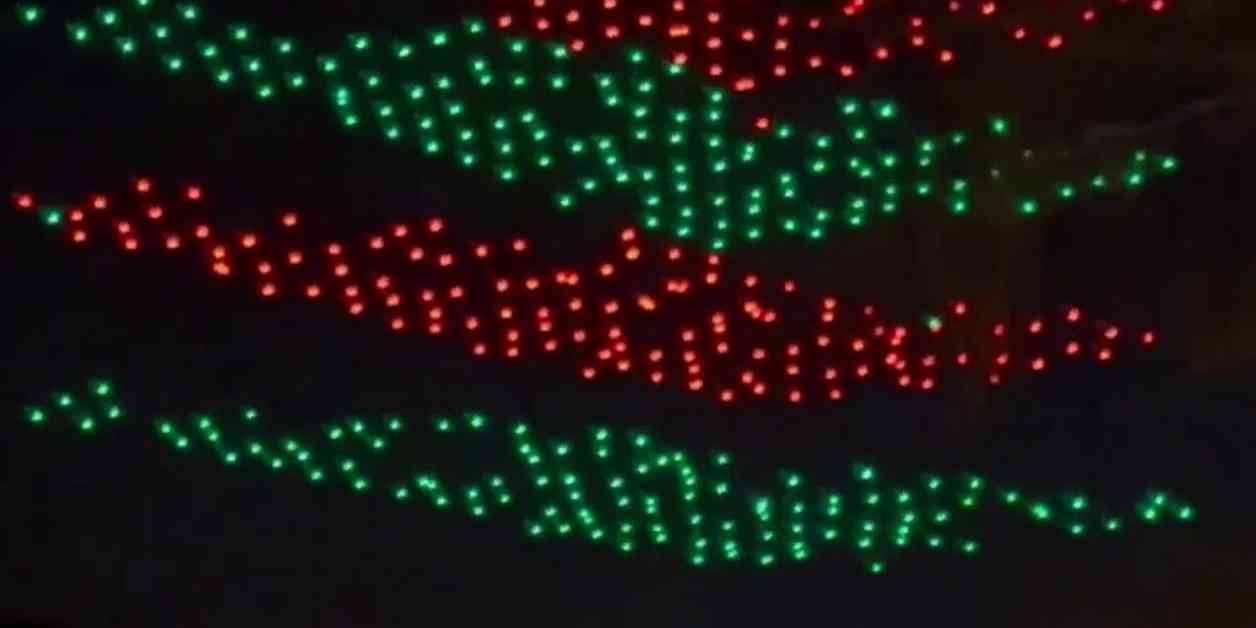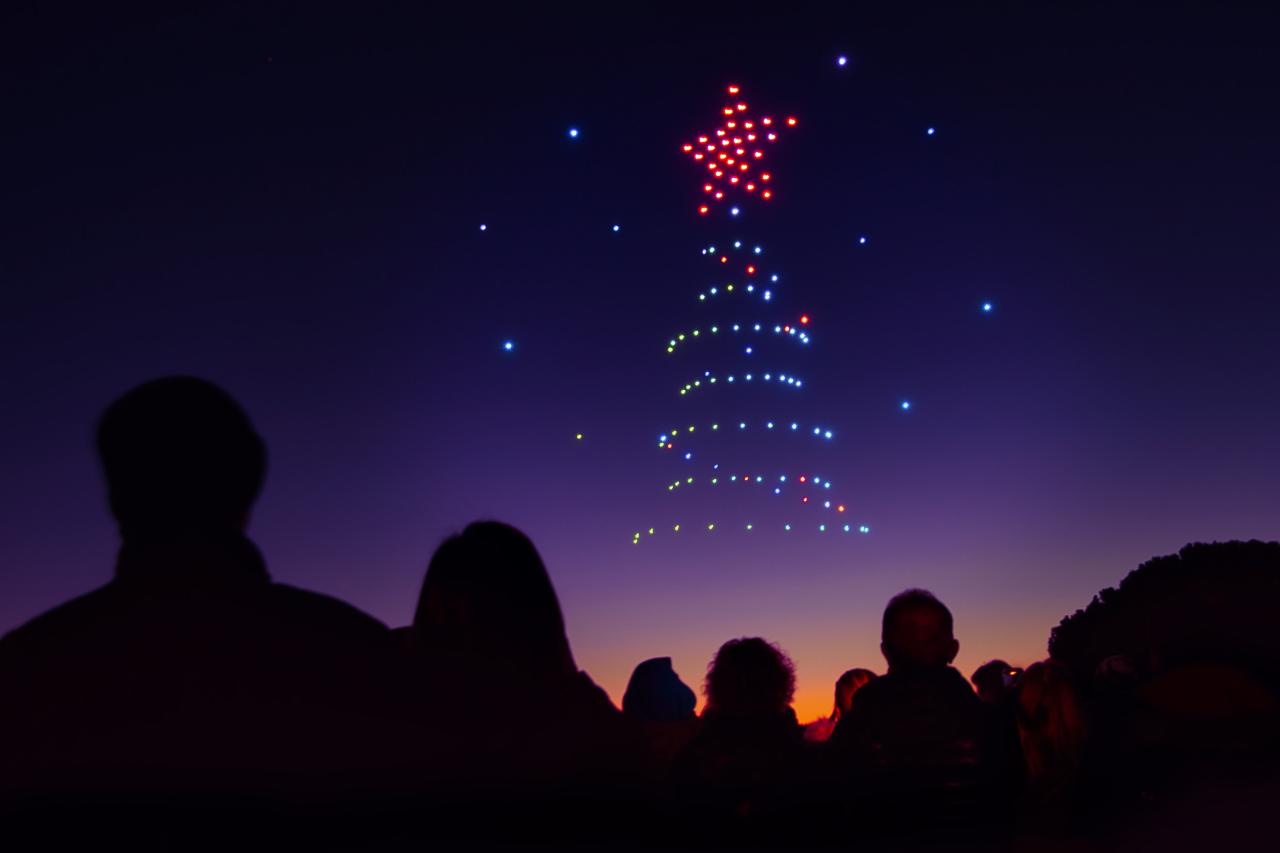Drone show accidents, while relatively rare, highlight the inherent risks associated with large-scale drone operations. This analysis delves into the various factors contributing to these incidents, examining mechanical failures, human error, and inadequate safety protocols. We explore current regulations, investigation techniques, and preventative measures to enhance the safety and reliability of future drone shows.
From analyzing specific case studies to exploring technological advancements aimed at mitigating risks, we aim to provide a comprehensive understanding of the challenges and solutions within the rapidly evolving field of drone show technology. The goal is to foster a safer environment for both operators and spectators alike, ensuring the continued enjoyment and success of these spectacular displays.
Drone Show Accidents: A Comprehensive Analysis

Drone shows, while visually stunning spectacles, carry inherent risks. Understanding these risks, implementing robust safety measures, and learning from past incidents are crucial for ensuring the continued safe development of this technology. This analysis delves into the various aspects of drone show accidents, from their causes and consequences to mitigation strategies and technological advancements aimed at enhancing safety.
Types of Drone Show Accidents
Drone show accidents can stem from a variety of sources, encompassing malfunctions, collisions, and human error. A comprehensive understanding of these contributing factors is paramount for effective accident prevention.
| Accident Type | Description | Frequency (Estimate) | Contributing Factors |
|---|---|---|---|
| Malfunctions | Unexpected failures in drone components, including motors, batteries, flight controllers, or GPS systems. | Moderate | Manufacturing defects, wear and tear, extreme weather conditions. |
| Collisions | Impacts between drones, or between drones and other objects (buildings, trees, etc.). | Low to Moderate | Loss of control, GPS interference, inadequate spacing between drones. |
| Human Error | Mistakes made by pilots, planners, or ground crew. | High | Inadequate training, poor planning, insufficient risk assessment, communication failures. |
Drone failures can be categorized into mechanical issues (e.g., motor failure, propeller damage), software glitches (e.g., firmware bugs, GPS errors), and communication problems (e.g., signal loss, interference). For instance, a motor failure during a complex maneuver could lead to a crash, while a software glitch might cause a drone to deviate from its programmed flight path, potentially resulting in a collision.
Human error plays a significant role. Examples include pilot fatigue, incorrect programming of flight paths, insufficient pre-flight checks, and failure to account for environmental factors like wind speed and direction. Poor communication between pilots and ground crew can also lead to accidents.
Safety Regulations and Protocols

International and regional regulations governing drone shows vary. Adherence to these regulations, along with the implementation of stringent safety protocols, is crucial for minimizing risks.
- Many countries require drone pilots to obtain specific licenses or certifications for commercial operations, including drone shows.
- Regulations often stipulate minimum distances from spectators and obstacles.
- Specific requirements for airspace authorization and notification to air traffic control are common.
- Safety protocols often mandate pre-flight checks, regular maintenance, and emergency procedures.
A comprehensive pre-flight checklist should include thorough inspection of all drones, verification of flight plans, testing of communication systems, and assessment of weather conditions. During flight, constant monitoring of drones is crucial, with immediate intervention procedures in place for any anomalies. Post-flight procedures should involve a detailed review of flight logs, assessment of drone condition, and documentation of any incidents.
Safety certification programs for drone pilots involved in shows vary in their rigor and requirements. Some focus on theoretical knowledge, while others emphasize practical flight skills and emergency response training. The level of certification often dictates the complexity of shows a pilot can participate in.
Accident Investigation and Analysis

A systematic approach to investigating drone show accidents is essential for identifying contributing factors and implementing preventive measures.
Drone show accidents, while rare, highlight the potential risks associated with unmanned aerial vehicles. The recent incidents underscore the need for stringent safety protocols, a point further emphasized by considering the more serious implications of events like the kazan drone attack , which demonstrates the potential for malicious use. Therefore, improving both operational safety and security measures for drone operations remains crucial to prevent future mishaps, regardless of intent.
Investigations should involve collecting evidence such as flight logs, video recordings, witness statements, and drone wreckage. A thorough analysis of this evidence, coupled with expert opinion, helps determine the root cause of the accident.
| Accident Case | Cause | Result | Lessons Learned |
|---|---|---|---|
| Hypothetical Case 1: Drone malfunction during a synchronized light show | Battery failure due to age and overuse. | One drone crashed, causing minor damage to nearby drones. | Implement stricter battery maintenance and replacement schedules. |
| Hypothetical Case 2: Collision due to loss of GPS signal | Strong electromagnetic interference disrupted GPS signals, leading to loss of control. | Multiple drones collided, resulting in significant damage. | Utilize redundant navigation systems and implement measures to mitigate electromagnetic interference. |
Technology plays a vital role. Flight data recorders, similar to those in airplanes, can provide valuable insights into the sequence of events leading to an accident. Video analysis from multiple angles can help reconstruct the accident and identify contributing factors.
Mitigation and Prevention Strategies, Drone show accident
Implementing various strategies can significantly reduce the likelihood of drone show accidents.
- Redundancy systems, such as backup batteries and flight controllers, can mitigate the impact of single-point failures.
- Emergency protocols, including procedures for immediate drone shutdown and retrieval, should be established and practiced regularly.
- Real-time monitoring systems using ground control stations and advanced sensors can allow operators to detect and respond to potential problems promptly.
- Enhanced pilot training programs, focusing on advanced flight techniques, emergency procedures, and risk assessment, are crucial.
A real-time monitoring system would ideally incorporate GPS tracking, sensor data from each drone (battery levels, motor temperatures), and communication status. This information would be displayed on a central control station, allowing operators to intervene swiftly in case of anomalies.
Technological Advancements and Safety
Advancements in drone technology are continually improving safety.
Improved GPS systems, enhanced obstacle avoidance sensors (e.g., lidar, radar), and more reliable communication protocols are reducing the likelihood of collisions and malfunctions. AI and machine learning algorithms can analyze flight data in real-time, predicting potential problems and alerting operators. Autonomous drone flight systems, while still under development, hold the potential to further enhance safety by reducing human error.
Public Perception and Risk Communication
Effective communication is key to building public trust and confidence in drone show safety.
Transparent communication about the risks associated with drone shows, along with detailed explanations of safety measures implemented, can help alleviate public concerns. Public awareness campaigns highlighting safety protocols and emergency procedures can foster a sense of security. Regular audits and independent safety assessments can further bolster public confidence.
Case Study: A Detailed Description of a Specific Drone Show Accident
Imagine a large-scale drone show featuring hundreds of drones performing intricate synchronized maneuvers. During a particularly complex sequence involving rapid changes in altitude and direction, a sudden gust of wind exceeding the predicted forecast significantly impacted several drones. One drone experienced a complete loss of control, resulting in a collision with another drone, causing both to fall to the ground.
The impact resulted in damage to both drones, but fortunately, no injuries occurred to spectators. The incident was attributed to a combination of factors: an unexpected increase in wind speed, the complex nature of the maneuver, and potentially a minor software glitch in the affected drones’ flight controllers. The subsequent investigation revealed the need for more robust wind-speed prediction models, enhanced software redundancy, and a more cautious approach to designing complex flight maneuvers in windy conditions.
Ultimately, ensuring the safety of drone shows requires a multi-faceted approach. This involves stringent safety regulations, thorough pilot training, robust technological advancements, and open communication regarding inherent risks. By learning from past accidents and proactively implementing preventative measures, the industry can strive towards a future where the breathtaking spectacle of drone shows can continue without compromising safety.
Questions and Answers
What is the most common cause of drone show accidents?
While varied, pilot error and inadequate pre-flight checks frequently contribute significantly to accidents.
What insurance is needed for drone show operations?
Recent drone show accidents highlight the importance of robust safety protocols. The incident underscores the need for reliable technology, such as that offered by companies like Sky Elements Drones, sky elements drones , which are known for their advanced features. Ultimately, preventing future drone show accidents requires a combination of careful planning and technologically superior equipment.
Liability insurance is crucial to cover potential damages or injuries resulting from accidents. Specific requirements vary by location and the scale of the operation.
Are there international standards for drone show safety?
While not fully standardized globally, many countries are developing and implementing their own regulations based on international best practices and risk assessments.
How are drone show accidents investigated?
Recent drone show accidents highlight the potential dangers of unmanned aerial vehicles, even in controlled environments. The precision required for such displays is starkly contrasted by the events unfolding in the conflict, as seen in the recent ukraine drone attack on russia , where the technology is employed for entirely different, and often more destructive, purposes. Understanding the safety protocols and risks associated with drone operation is crucial, whether for entertainment or military applications.
Investigations typically involve examining flight logs, reviewing witness statements, analyzing drone wreckage, and potentially utilizing flight simulation to recreate the incident.
